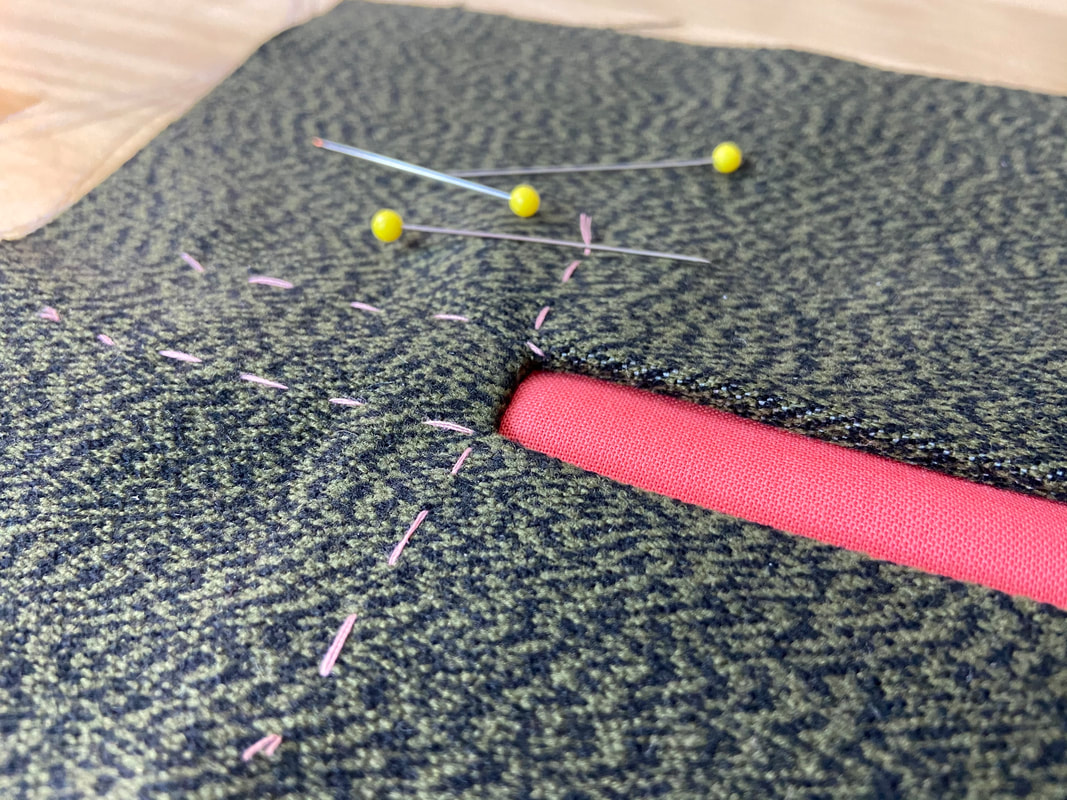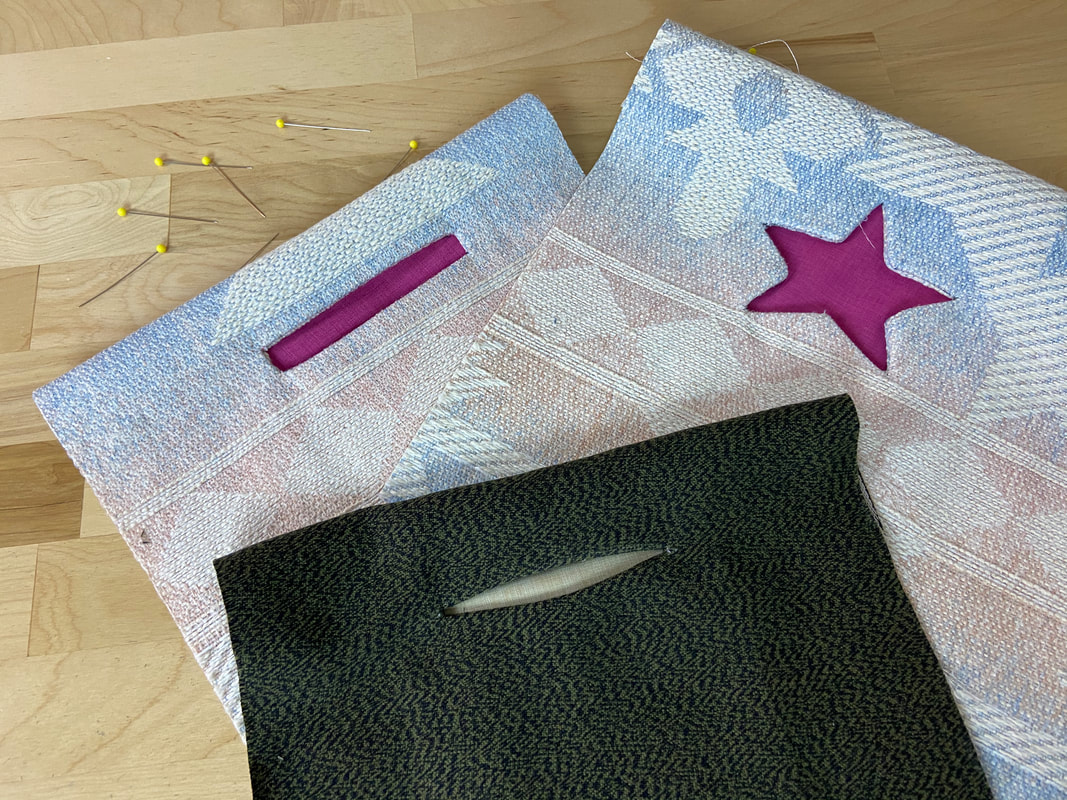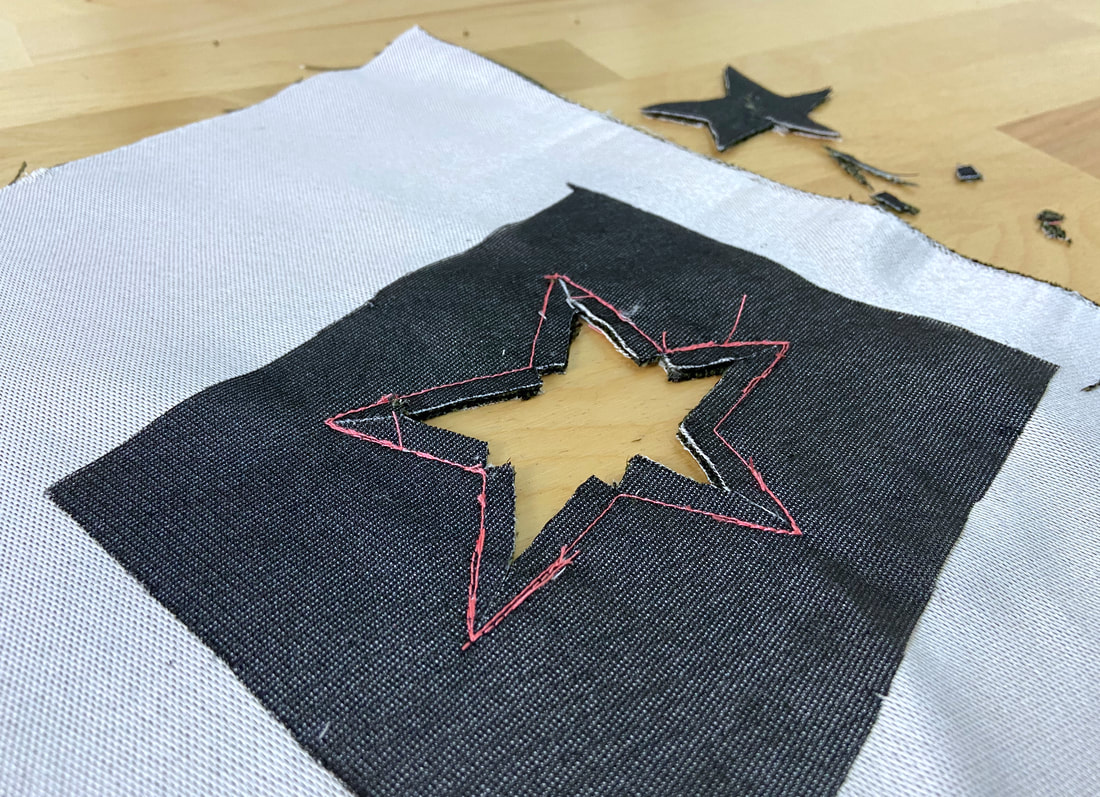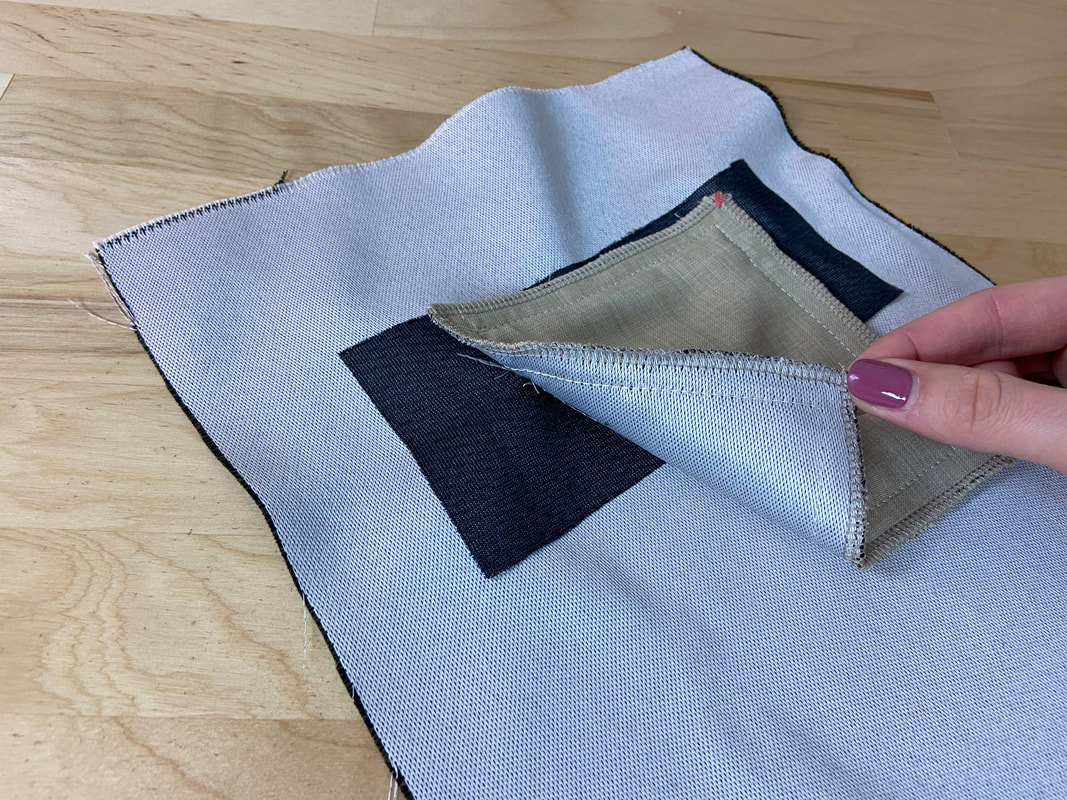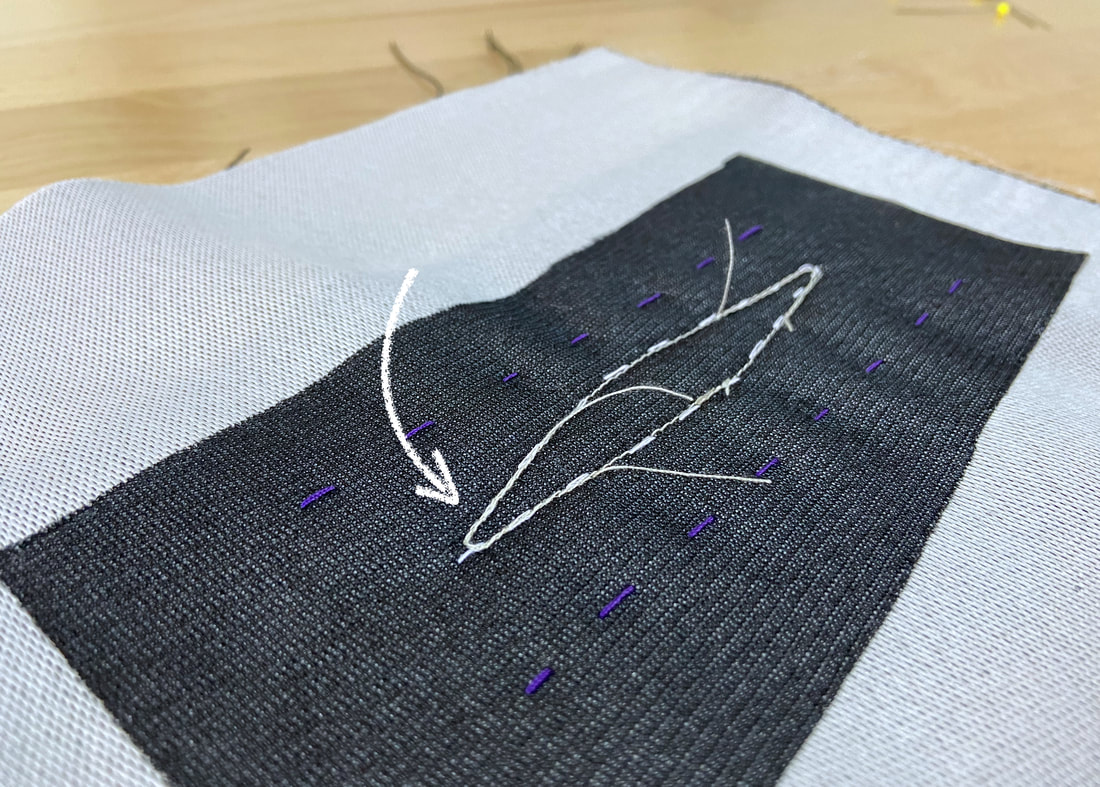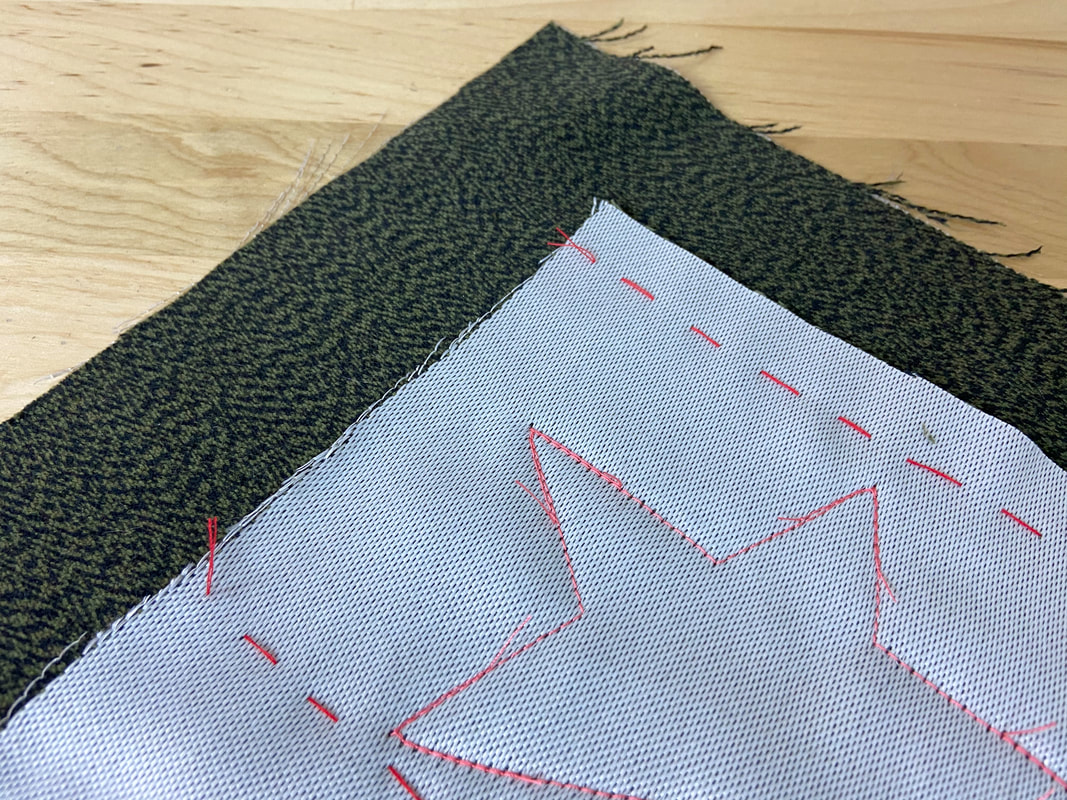As opposed to patch pockets and on-seam pockets, slash pockets are cut directly into the fabric surface. Some of the most conventional slash pocket styles include welt and bound pocket variations.
The most basic of all slash pockets are simple faced pocket. This basic style features a plain, clean-finished edge such as a slit or other geometric shape. There are no welts or additional flaps. Constructing a faced slash pocket is as simple as cutting the desired pocket opening shape and finishing it with a facing.
A simple slash pocket is the back bone of more complex slash pocket applications like the bound and welt styles. If you understand the construction of a simple slash pocket, you’ll find it easier to grasp the technicalities behind these more complex styles.
The beauty of a faced pocket opening is that it can be constructed of any shape, size, depth and dimensions using the same basic techniques.
In the examples linked below, you’ll start with a simple angular slit pocket, move on to a rectangular slash pocket, and graduate to a star-shaped pocket. The latter will teach you that the sky is the limit when it comes to how many unique shapes you can achieve with this unique pocket application.
At the base of sewing the perfect slash pocket are the following technical elements:
- Notch, trim and clip fabric edges and corners. These tension-release techniques allow the pocket opening to lay flat, smooth and well-defined at the corners.
- Reinforce the pocket opening with interfacing. Interfacing not only stabilizes the slashed fabric, it also increases the pocket’s overall durability.
- Reinforce pocket ends and corners with extra stitching (if possible). An extra row of overlapping stitches at each pocket opening corner will strengthen these vulnerable transition points.
- For added durability and control, always use a shorter stitch length. In addition to overlaying the stitching at each pocket corner, it is also important to use a shorter stitch length to provide additional strength at each seam. Conveniently, a shorter stitch length provides more comfort and control during the machine stitching process, which is especially helpful when sewing slash pockets.
- Understand slash pocket placement on the garment. If the pocket serves a more decorative role, position it such that it won’t have to withstand constant strain and repeated use.
All slash pocket examples linked below are constructed of two separate pieces cut from either the same fabric as the garment, or the fabric of your choice. Each example requires a facing and a pocket piece. Both pieces are cut identical in shape and size.

